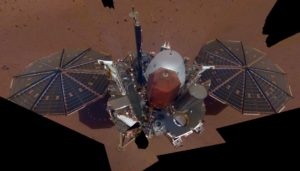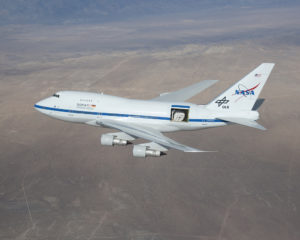 Welcome to The Carnival of Space #608! This is the weekend of the Space Access Society conference #SpaceAccess2019, long held in Phoenix, Arizona, it was in Northern California this Spring. Looks like Carnival of Space member Brian Wang was in attendance. It’s been awhile since I’ve attended myself though reading Brian’s articles are a close second to being there. Universe Today brings excellent articles as well this Carnival. Take a look and enjoy the Carnival!
Welcome to The Carnival of Space #608! This is the weekend of the Space Access Society conference #SpaceAccess2019, long held in Phoenix, Arizona, it was in Northern California this Spring. Looks like Carnival of Space member Brian Wang was in attendance. It’s been awhile since I’ve attended myself though reading Brian’s articles are a close second to being there. Universe Today brings excellent articles as well this Carnival. Take a look and enjoy the Carnival!
My Next Book!
Pam Hoffman | Everyday Spacer
My New Book Cover is Here. Take a look!
Scientists are Trying to Figure Out Why InSight’s “Mole” Can’t Dig Any Deeper
Evan Gough | Universe Today
Engineers at the German Aerospace Center (Deutsches Zentrum für Luft- und Raumfahrt; DLR) are busy working with a replica InSight Lander to see if they can understand what’s blocking the lander’s mole.
The mole is the short name for the lander’s Heat Probe, which is hammering its way into the Martian surface. The Heat Probe is actually called the HP3, or Heat and Physical Properties Package. It’s designed to work it’s way as far as 5 meters (16.4 ft.) into the soil, where it will measure…
The Closest Star to the Sun, Proxima Centauri, has a Planet in the Habitable Zone. Life Could be There Right Now
Matt Williams | Universe Today
In August of 2016, astronomers from the European Southern Observatory (ESO) announced the discovery of an exoplanet in the neighboring system of Proxima Centauri. The news was greeted with consider excitement, as this was the closest rocky planet to our Solar System that also orbited within its star’s habitable zone. Since then, multiple studies have been conducted to determine if this planet could actually support life.
Unfortunately, most of the research so far has indicated that the likelihood of habitability are not good. Between Proxima Centauri’s variability and the planet being tidally-locked with its star, life would have a hard time surviving there. However, using lifeforms from early Earth as an example, a new study conducted by researchers from the Carl Sagan Institute (CSI) has…
Voyager and Pioneer’s Grand Tour of the Milky Way
Matt Williams | Universe Today
During the early 1990s, NASA’s Pioneer 10 and 11 probes became the first robotic missions to venture beyond Neptune. In 2012 and 2018, the Voyager 1 and 2 missions went even farther by crossing the heliopause and entering interstellar space. Eventually, these probes may reach another star system, where their special cargo (the Pioneer Plaques and…
Space Weather Forecasts can now give Satellites One Whole Day of Warning when a Killer Solar Storm is Inbound
Evan Gough | Universe Today
Earth’s fleet of satellites is in a vulnerable position. When solar activity increases, high-energy particles are directed toward Earth. Our large fleet is in the direct path of all that energy, which can damage them or render them inoperable. But now we have another tool to help us protect our satellites.
A new study published in the Space Weather journal shows how scientists can now predict some of this dangerous space weather a day in advance, providing some early warning for satellites. Specifically, it gives a whole day of warning when space storms of high-energy particles are headed toward spacecraft and…
SOFIA Follows the Sulfur for Clues on Stellar Evolution
David Dickinson | Universe Today
The high-flying SOFIA telescope is shedding light on where some of the basic building blocks for life may have originated from. A recent study published on The Astrophysical Journal: Letters led by astronomers from the University of Hawaii, including collaborators from the University of California Davis, Johns-Hopkins University, the North Carolina Museum of Natural Sciences, Appalachian State University, and several international partners (including funding from NASA), looked at a lingering mystery in planet formation: the chemical pathway of the element sulfur, and its implications and role in the formation of planets and life.
Momentus Water-Plasma Space Transportation Service #SpaceAccess2019
Brian Wang | Next Big Future
Momentus will have its first launch June 27, 2019. They have $9 million in seed funding and have $20 million in customer contracts. The first mission is called El Camino Real and is the pathfinder mission.
Joel Sercel is presenting on Momentus Space’s Water-Plasma Propelled In-Space Transportation Services.
The system is super-safe and can be transported on the seat of a commercial airplane.
In 3-4 years, there will be 1500 small sats launched per year without including the mega-constellation satellites and Momentus sees these small satellites as…
SpaceIL Update on Moon Lander Crash Analysis and Next Mission Estimate
Brian Wang | Next Big Future
SpaceIL connected to the Space Access 2019 conference via Skype with a presentation by Yonatan Winetraub. SpaceIL took a time capsule to the moon.
SpaceIL will try to make a second attempt to land on the moon. The first mission crashed after a problem caused the main engine to shut off at the last minute when it was 150 meters from the moon.
SpaceIL provided a summary of the analysis of the failure that caused the crash. They have not finalized the conclusion or crash report. An inertial measurement unit malfunctioned. The computer switched off the inertial measurement unit. There were patches in RAM. Someone tried to turn on the inertial measurement unit. This caused a reset which caused patches in RAM to be lost. A cascade of problems were…
Radically Different Power Beaming With Small Emitter and Small Receiver
Brian Wang | Next Big Future
Jeff Greason presented a radically new kind of power beaming. This will enable radical changes to drones, planes and eventually space launch. This presentation is at Space Access 2019.
Electric Sky will help people travel faster, cleaner, quieter, and more economically. They source power from the electrical grid, a reservoir of energy that’s less expensive than most any other, and has the potential to become the cleanest. They transport that energy up to the vehicle while in flight. As a result the vehicle can be…
Rob Hoyt at Tethers Unlimited Described How he Plans to Integrate Their Projects to Bootstrap an Off-World Economy
Brian Wang | Next Big Future
There is a chicken and the egg problem to get the various parts of the plan developed to have supply and demand activated at nearly the same time.
They have a water-based propulsion unit as the first element. They are working on LEO Knight a Small Satellite Servicing machine. They also have a KRAKEN robotic arm.
Tethers Unlimited has a scalable water propulsion system for cubesats and micro-satellites.
The HYDROS Propulsion System uses on-orbit electrolysis of water to generate hydrogen and oxygen propellant, which are fed to a simple bipropellant thruster. To enable this, we have developed a compact electrolysis cell designed to…
How Many Re-entries Can Be Made With a PICA Heat Shield?
Brian Wang | Next Big Future
SpaceX Dragon is using the PICA heat shield. Dan Rasky of NASA Ames presented on PICA at Space Access 2019. PICA (Phenolic Impregnated Carbon Ablator) has a carbon fiber substrate. It uses phenolic as a transfer. You can reload the phenolic and get hundreds of reuses. If you do not reload the phenolic you get…
That’s it for this Carnival of Space. Watch for the next Carnival, #609, over at Universe Today!






































